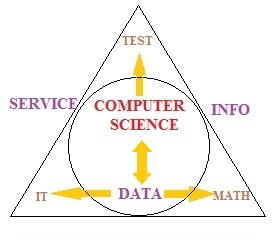IT Audit and Security
Homework Help & Tutoring
We offer an array of different online IT Audit and Security tutors, all of whom are advanced in their fields and highly qualified to instruct you.
 15 Multiple Choice Information Security and IT Audit Questions
15 Multiple Choice Information Security and IT Audit Questions
 15 Multiple Choice Questions Involving IT Security and Audit (Certification)
15 Multiple Choice Questions Involving IT Security and Audit (Certification)
 IT Audit and Security Questions
IT Audit and Security Questions
 4 Technical Cybersecurity Questions and NTFS Permissions System (600 words)
4 Technical Cybersecurity Questions and NTFS Permissions System (600 words)
 4 Technical Questions With Cybersecurity and Windows Server 2008 Troubleshooting (700 words)
4 Technical Questions With Cybersecurity and Windows Server 2008 Troubleshooting (700 words)
 IT Computer Support Servicies Questions
IT Computer Support Servicies Questions
IT Audit and Security
What is an IT Audit?
Just as any other type of audit functions, an IT audit includes evaluation and review of automated and non-automated processing systems and their interfaces. An IT audit gathers information about information systems and plans steps that would help auditors to understand the structure of the internal control units and processes. An IT audit puts a specific focus on items related to the control environment and procedures, risk assessment and detection, and how to equate the total risk estimate.
The objectives of an IT audit include ensuring companies and businesses meet legal and regulatory standards and requirements, and secure integrity, confidentiality, and availability of data.
Why is IT security Important for Businesses?
Business leaders may think they know everything about IT because they use laptop and tablet computers. Cyber attackers, however, use increasingly complex ways to penetrate digital security and cause harm. Recognizing these attacks requires great knowledge of computer programming that goes beyond utilizing the benefits of simple user electronics. According to the McKinsey report from 2014, cyber attacks have the potential to hurt business and technology innovations and cause a cumulative damage impact of an estimated three trillion U.S. dollars. Introducing IT governance into businesses might significantly lower the risk of a cyber attack. Ensuring security of computer systems is a complex task that requires many resources.
What can Businesses do to Prevent Cyber Attacks?
Contemporary digital business systems are vulnerable to an increasing number of highly sophisticated cyber attacks. These attacks can be executed from any part of the world because most business use the Internet to connect with other users, vendors, or clients. There are a number of recommended cybersecurity models which help businesses create resilience to prevent or mitigate the risks of cyber attacks and their devastating impacts. Because information technology is a valuable asset in business development, there is an emerging consensus on what these cybersecurity models should look like. Recognizing potential impacts of cyber attacks on businesses is the first step in preventing those attacks. Introducing IT governance into corporate structures might be a part of the solution. Alignment of IT with business strategies and following the list of cyber security models may also help companies prevent or mitigate the risks of cyber attacks.
What is Alignment?
Some major concerns related to IT security that face executives and business leaders include integrating IT technologies in such a way that it coincides with business strategies and ensures uninterrupted business development. This integration is called alignment and it is one of the most essential components of staying competitive in the global business market. It is crucial to understand the way alignment can be integrated within business strategies.
How can Businesses implement Alignment?
An IT sector needs to meaningfully understand the exact needs of the company so that it can provide fast, reliable and secure business solutions that will operate without disruptions. There are a number of important inhibitors that need to be considered during the alignment process which include: the lack of close relations between IT and business, prioritization, commitment, understanding, senior executive support, and leadership.
One of the keys to successful alignment is good and open communication between executive and IT sectors. Communication at all levels is the key to educate personnel on recognizing and avoiding potential cyber attack hazards. IT personnel must engage in strong partnership relationship with managers in order to successfully integrate both business and technological capacities into effective business solutions at all levels.
Strategic roles and IT priorities must be defined at the highest corporative decision-making level. Companies also need to consider prioritizing their information assets by the associated risk levels and provide different levels of protection accordingly. Securing the loss of highly sensitive proprietary information by clearly defining protection criteria and setting measurable goals has to be considered a priority. Assuring security of data is essential because businesses can sometimes allocate significant resources to measure the levels of performance instead of taking action based on these measurements. It is crucial to deploy active defense systems and continuously test IT systems for security weaknesses in order to improve the incident response. Creating an environment for governing cross-functional initiatives such as establishing the architecture of new IT infrastructure may help to improve customization of defense systems and result in more effective attack responses.
Educating personnel and integrating cyber resistance into government and risk-management processes is also something to consider. A user can sometimes open hazardous files, send confidential documents via unprotected email channels, or use insecure passwords that are easily cracked. This is why it is so important for companies to educate their workers in IT.
References
Chinn, D., Kaplan, J., & Weinberg, A. (2014, January). Risk and responsibility in a hyperconnected world: Implications for enterprises. Retrieved March 27, 2016, from http://www.mckinsey.com/business-functions/business-technology/our-insights/risk-and-responsibility-in-a-hyperconnected-world-implications-for-enterprises
D'Onza, G., Lamboglia, R., & Verona, R. (2015). Do IT audits satisfy senior manager expectations? Managerial Auditing Journal, 30(4/5), 413. doi:10.1108/MAJ-07-2014-1051
Héroux, S., & Fortin, A. (2013). The Internal Audit Function in Information Technology Governance: A Holistic Perspective. Journal Of Information Systems, 27(1), 189. doi:10.2308/isys-50331
Lapke, M. S., & Henderson III, D. L. (2014). Integrated Activities in Information Technology Auditing and Their Area Distribution. Journal Of Contemporary Management, 3(2), 22.
Luftman, J. (2003). Assessing IT/Business Alignment. Information Strategy: The Executive's Journal, 20(1), 7.
Luftman, Jerry. 2003. "Assessing IT/Business Alignment." Information Strategy: The Executive's Journal 20, no. 1: 7.
To fulfill our tutoring mission of online education, our college homework help and online tutoring centers are standing by 24/7, ready to assist college students who need homework help with all aspects of IT audit and security. Our IT computer support services tutors can help with all your projects, large or small, and we challenge you to find better online IT audit and security tutoring anywhere.
College IT Audit and Security Homework Help
Since we have tutors in all IT Audit and Security related topics, we can provide a range of different services. Our online IT Audit and Security tutors will:
- Provide specific insight for homework assignments.
- Review broad conceptual ideas and chapters.
- Simplify complex topics into digestible pieces of information.
- Answer any IT Audit and Security related questions.
- Tailor instruction to fit your style of learning.
With these capabilities, our college IT Audit and Security tutors will give you the tools you need to gain a comprehensive knowledge of IT Audit and Security you can use in future courses.
24HourAnswers Online IT Audit and Security Tutors
Our tutors are just as dedicated to your success in class as you are, so they are available around the clock to assist you with questions, homework, exam preparation and any IT Audit and Security related assignments you need extra help completing.
In addition to gaining access to highly qualified tutors, you'll also strengthen your confidence level in the classroom when you work with us. This newfound confidence will allow you to apply your IT Audit and Security knowledge in future courses and keep your education progressing smoothly.
Because our college IT Audit and Security tutors are fully remote, seeking their help is easy. Rather than spend valuable time trying to find a local IT Audit and Security tutor you can trust, just call on our tutors whenever you need them without any conflicting schedules getting in the way.





